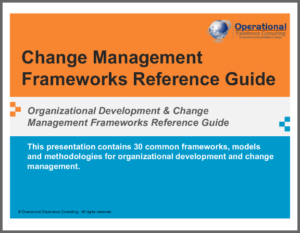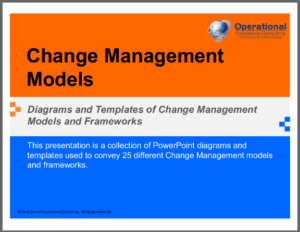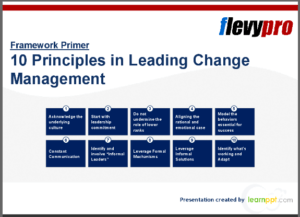How do you cope with change?
The post is my rant about change – what it really is, and how we can cope with it. It transitions to change complexity, and what tools and approaches strategic project managers can use to manage it.
Change
It’s been said – time and again – that, “The only constant is change.”
Think about the ultimate resistance to change. Take, for example, someone simply sitting in their room and watching the clock. They are essentially doing nothing.
But while they are doing nothing, the clock is ticking away. They get a little older. They may get hungry. The weather may shift a bit. Eventually they will get tired. And there will surely be costs.
Think of the most primitive situation. You are out in the wilderness – alone. Suddenly you have some more pressing needs – for shelter from the elements, protection from predators, and needs for nourishment and health.
In other words, you have things to do – things to maintain, sustain, and maybe even improve. If you sit and do nothing, things will change around you, and even inside you.
Now let’s add more people to the picture. Suddenly you have interaction, relationships, interdependencies – and in addition to those primal needs, these are constantly changing as well.
If you, and everyone else, don’t do something – exert some effort to maintain, sustain, and even improve your situation – things will change on you, and you probably won’t like it!
We cannot get away from change.
Indeed, “The only constant is change.”
Continuous Change
 In modern society, we talk about continuous change.
In modern society, we talk about continuous change.
But the reality is, continuous change has always been with us. It’s just a different kind of continuous change.
In the primal examples above, most change was right in front of us. We could see it, react to it, and manage it in real time. But there were bigger changes that we could not see in front of us so easily: an earthquake, an attack by an animal, an invasion by hostile people, or an injury or sudden change of health.
Constant or continuous change seems to be a bad thing. We often think, things should not change so much or so often…and we should not either!
However, for every advancement or improvement made in society – in any aspect – we have to deal with change. So we want change…but at the same time we seem to want things to stay the same.
So, change was always here, and always will be. And the more we advance and improve things, the more change we will have to deal with. Change has always been continuous…but it is getting faster. How do we deal with this reality?
What we really need are ways to manage change better. And we need them – before we get exhausted from dealing with all the change.
Change Exhaustion
 It’s fine to understand and accept that change is inevitable. We can understand and accept that it is constant – that it is happening right now.
It’s fine to understand and accept that change is inevitable. We can understand and accept that it is constant – that it is happening right now.
We may not see it in every moment – but if not, we are at least inching closer to it.
It can be exhausting for people – and if we simply rest, we can be eaten alive, or something equally cataclysmic can happen!
People have a need for stability.
But we also have a need for change!
With all the continuous change, it can be like drinking from a fire hose. We simply don’t have the capacity to deal with it all. And we get exhausted.
How can we cope with this change exhaustion? Here are a few thoughts:
- Work together with others – We are not in this alone. Whether you are a leader or not, we need to acknowledge and share what we are experiencing. We need to pay attention to the emotional aspects of our experience. We need to allow ourselves to vent our emotions – to understand what we are feeling. And we need to unite.
- Increase our capacity – One thing we can do is to increase our capacity, or capability, for change – personally and collectively. If change is a constant, then it seems that we need to have a constant way of dealing with it. We may need to allocate more of our resources and time to it.
- Protect ourselves – Part of managing change is protecting ourselves from the dangers of it. Simple things, like taking care of ourselves actually contributes to protecting ourselves from becoming harmed by change. In what ways can we protect ourselves collectively from harmful effects of change, but still accept the change and even leverage it for good?
- Go on the offensive – We can “control our fate” by going on the offensive. If change is going to happen anyway, why can’t I take the lead and make it happen my way? Of course many things happen externally – we have no control over them. But we can acknowledge them – personally and collectively – and find ways to protect ourselves from harm or even leverage them for gain.
Indeed, change can be exhausting – but since “The only constant is change” why not embrace it and manage it?!
Change Management and Strategic Project Management
Usually strategy and project management are all about change. What more formalized tools, methods, and frameworks are out there to help navigate the change?
—————————————-
I recommend these PM templates (paid link):

—————————————-
Here is a listing of change management tools covered in this blog so far:
- ADKAR Model of Individual Change – Focuses on the individual working through the change process based on 5 elements: Awareness, Desire, Knowledge, Ability, and Reinforcement.
- Satir Model for Change – A personal growth model that focuses on the individual coping with change through 5 stages: Late status quo, Resistance, Chaos, Practice and Integration, and New status quo.
- John Kotter Change Management Model – An 8-step change management model for executing change in an organization: 1. Create urgency, 2. Build coalition, 3. Create vision, 4. Communicate vision, 5. Empower others, 6. Create quick wins, 7. Build on the change, and 8. Embed the change.
- Kubler-Ross Change Model – Also known as ‘the change curve’, models what people predictably experience in the change process into 7 phases: 1. Shock, 2. Denial, 3. Frustration, 4. Depression, 5. Experimentation, 6. Decision, and 7. Integration.
- Kurt Lewin Change Management Model – Boils the change process down to 3 simple steps: Unfreeze, Change, Refreeze. The idea is to know where you are and to ensure you are thorough with each step.
- William Bridges Transitions Model – Distinguishes ‘transitions’ as an individual’s response to ‘change’. Change, by contrast, is situational. Three ‘zones’ of the transition are Endings, Neutral Zone, and New Beginnings.
- W. Edwards Deming and the PDCA Cycle – Provides a framework or method for effecting continuous change for the better through a repeating 4-step process: 1. Plan, 2. Do, 3. Check, and 4. Act. ‘Study’ is sometimes used instead of ‘Check’ in #3 for a more thoughtful approach – making it the PDSA cycle.
- Rick Maurer 3 Levels of Resistance – Deals with the resistance portion of change management by defining three levels of resistance: 1. “I don’t get it”, 2. “I don’t like it”, and 3. “I don’t like you”.
- Nudge Theory and Cognitive Bias for Change Management – Formalizes the practice of ‘nudging’ – not forcing – people in a particular direction. This plays on people’s tendency to take the easy way out, making decisions without much thinking – almost automatically. The alternative is hard: reasoning, thinking, and applying rationality. Nudging is very helpful for managing change.
Each of these frameworks provides something unique to help strategic project manager implement change effectively. It is best to tailor a combination of them to best fit your situation.
—————————————-
I recommend these strategy resources on FlevyPro (paid links):
| Change Management Frameworks Reference Guide 402-slide PowerPoint deck $179.00 |
Change Management Models 136-slide PowerPoint deck $59.00 |

|

|
| 10 Principles in Leading Change Management 17-slide PowerPoint deck $25.00 |
Lean Change Management 21-slide PowerPoint deck $25.00 |
 |
 |
—————————————-
Summary and Conclusion
Like it or not, change is the only constant in life. You cannot stop change, as it occurs on its own. But you can change your reaction to it – and manage your transition through it.
Faced with continuous change, we humans often can get absolutely exhausted from it. It is important to take care of ourselves by collaborating with others, expanding our capacity for change, protecting ourselves from harmful change, and taking the initiative.
In this complex world, many changes are implemented by strategic project managers. There are many tools, techniques, methods, and frameworks listed in this post to help with the change process.
I try to accept that change is inevitable…and also try to take the initiative in every way I can.
What is your experience with change?
For a quick 3-minute video on the history of people and change, I recommend, “Managing Change In Organisations”:
